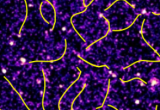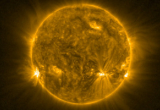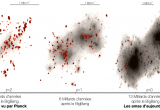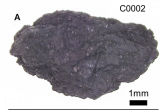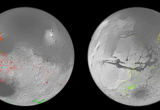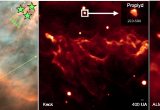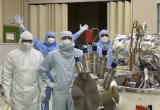In a recent study the ByoPiC team takes advantage of the most recent X-ray survey, SRG/eROSITA, to confirm unambiguously the detection of an X-ray signal associated with thermal emission from a hot plasma in cosmic filaments.
This signal from only 460 filaments, located in the first 140 deg² survey published by the SRG/eROSITA collaboration, has allowed the density and temperature of the plasma to be constrained precisely.



